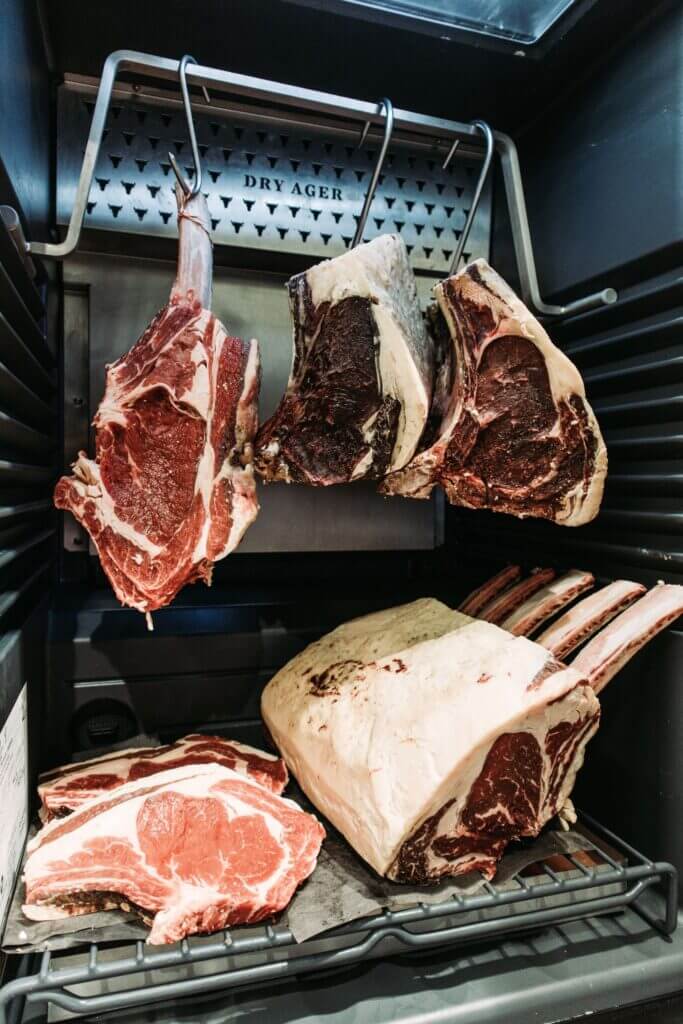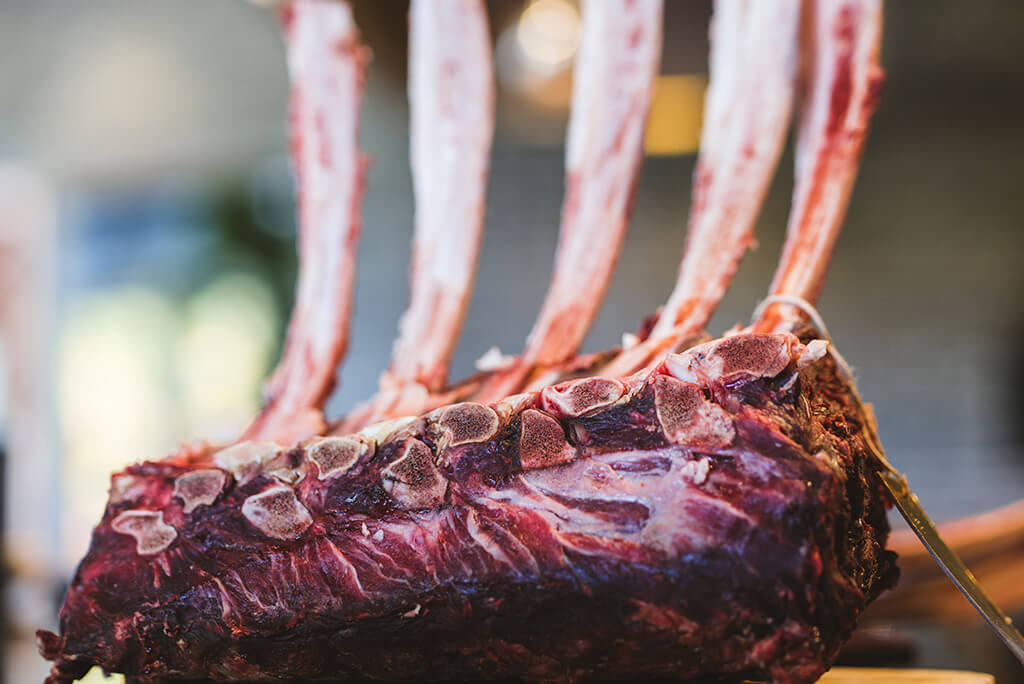When you visit your favourite restaurants you will notice that their menus brag about the length of time their meat is dry-aged. You will also notice that your local market will charge a premium for meat that is dry-aged, and the longer the duration, the higher the price.
But, what is the difference between dry-aged meat and regular meat, and is it safe to eat meat so long after it has been slaughtered? These are questions that most people don’t really know how to answer, so we think it’s time that we shed some light on this age-old process, so you can distinguish between different meat options and look cool in front of your clueless friends.
We’ll also discuss how to choose premium quality dry-aged meats and how to cook them properly at home. By the end of this article, you will be a meat-feasting pro!
What is dry-aged meat and why is it so popular?

Dry-ageing is a process whereby meat, normally beef, is exposed to open air in a controlled environment to bring out the moisture, which then causes the meat’s natural enzymes to break down the fibres of the meat over a long period of time, making them more tender and flavourful than when they are fresh.
Of course, this needs to be done properly to ensure the meat is not contaminated and does not spoil. Meat is typically dry-aged between 28 and 60 days. The longer it is matured the softer the meat becomes and the greater the depth of flavour.
Dry-aged meat is considered a premium product because of the specialised process the meat undergoes before it is sold. Much like fine wine and whiskey, its maturity length gives it an attractive status that demands a higher price tag than fresher options.
Because of this, dry-aged meat has become increasingly popular in recent years, particularly in restaurants. But, even local butchers are offering a wider selection of dry-aged meat than they did in previous years and for good reason.
_______________________________________________________________________________________ Must read: Quality at steak: what’s the beef? ______________________________________________________________________________________How noticeable is the difference?
Well, it is difficult to accurately measure the difference in preference when it comes to flavour, texture and aroma because this is largely subjective, but it is commonly agreed that dry-aged meat offers a richer depth of flavour with tones that are not present in fresher meat. Most people agree that you can smell the difference out of the packet and certainly when cooking the meat. More than this, dry-aged meat cooks in less time owing to its lower moisture content. This may be a better test for measuring the difference in its texture and tenderness when compared to fresh meat options. It is also easier to carve, which is another great test.
How does meat not spoil during the ageing process?
The process of dry-ageing meat has been practised for thousands of years. It was actually used as a method to keep the meat from spoiling to prevent the waste of food or livestock.
Beef that is being dry-aged is able to avoid spoiling through the control of a number of different processes, including temperature and humidity that otherwise contribute to how and why meat spoils.
Temperature control is essential in preventing bacteria and mould from forming which would otherwise cause the meat to spoil. Similarly, humidity control helps keep the natural juices inside the beef while also reducing moisture loss from the outside layers, which can help slow down decomposition.
Another way dry-aged beef avoids spoiling is through its protective fat and bone layer which helps protect it against spoilage and oxidation. Finally, air flow also plays an important role in keeping beef that is being dry-aged from spoiling as it helps form a crust over the exterior which prevents any further decay or oxidation from occurring.
In order to get optimum results from dry ageing, all three of these processes must be carefully monitored and controlled – if one factor isn’t done correctly then it could lead to premature spoilage of the beef. Fortunately, once successfully completed, you’ll be left with an intensely flavoured piece of meat that tastes, unlike any other fresh steak you’ve ever consumed before.
How to choose the best dry-aged meat?
Ultimately, meat that is dry-aged for a minimum of 28 days will be better than regular fresh meat, but remember that the flavour profile becomes more intense the longer the meat is dry-aged, so it is important to determine your preferred flavour profile and match that with the maturity period that gives you that flavour. In other words, you need to eat more steak and figure out which length of maturity consistently gives you the most joy.
For great quality matured meat, check out the Halal Origins beef page. All of our meat is matured for at least 28 days, which is the preferred option by most diners, but we will be adding later maturity options soon.
The advantage of buying from Halal Origins is that all of our meat is organic, halal, and cheaper than your local supermarket on most options. Even our organic chicken options offer considerably better value than the national mass-market options.
How to cook dry-aged meat
Cooking dry-aged meat is easy but must be handled with greater care than fresher meat options, but it is well worth the extra effort. To get started, make sure to buy a steak that has been dry-aged for at least two weeks, but preferably 28 days.
Before cooking, allow your steak to rest at room temperature for at least thirty minutes so that its internal temperature can even out and it will cook evenly when placed in the pan. Once ready, lightly rub both sides of the steak with oil and season with salt and pepper according to taste.
Next, heat a cast iron skillet over medium-high heat until the pan is smoking hot before adding your steak. Leave it alone for about three minutes or until you start to see some browning around the edges – do not flip it too soon!
After three minutes have elapsed, use tongs to flip your steak over and reduce the heat slightly if needed. Cook on each side until an instant-read thermometer registers 125 degrees Fahrenheit (for medium rare) before removing it from the skillet and allowing it to rest for several minutes – this ensures that all of the juices will redistribute throughout the steak resulting in an even juicier piece of meat.
When serving, slice thinly against the grain for maximum tenderness – this allows you to get through those connective tissues with ease! Be sure not to overcook, which is easily done with dry-aged meat, as this will result in a tougher piece of meat with less flavour.
Final Words
Now, the next time you go to a restaurant and see a dry-aged option on the menu, you can order with confidence that you understand the difference between that choice and other options. We find that simply knowing about our food helps us to appreciate it more.
At Halal Origins, we take the quality of our meat very seriously and we endeavour to understand what makes it great, so we can continue to deliver the finest quality meat at the best possible price.
So, don’t hesitate and check out our organic meat options today, you will be so glad that you did and so will we be.

